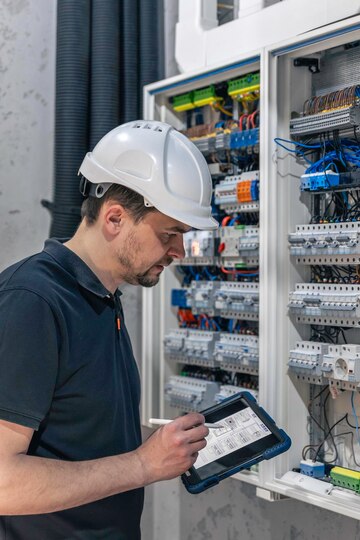
In today’s rapidly evolving technological landscape, innovations in electrical supplies are reshaping the way we harness and utilize electricity. From advancements in energy efficiency and sustainability to smart technologies revolutionizing connectivity and control, the electrical industry is at the forefront of driving progress and innovation. In this comprehensive guide, we’ll explore the latest trends, technologies, and innovations shaping the future of electrical supplies.
10 Best Trends and Innovations in Electrical Supplies
1. Smart Grid Technologies
Smart grids integrate advanced communication and monitoring capabilities into the electrical grid, enabling real-time data analytics, demand response, and optimized energy distribution. This smart technology enhances grid reliability, energy efficiency, and resilience while accommodating renewable energy integration and electric vehicle charging infrastructure.
2. Energy Storage Solutions
Energy efficiency systems, including lithium-ion batteries, flow batteries, and supercapacitors, are revolutionizing the way we store and manage electricity. These technologies enable grid stabilization, load balancing, peak shaving, and backup power, unlocking new possibilities for renewable energy integration and grid flexibility.
3. Internet of Things (IoT) Devices
IoT devices, such as smart meters, sensors, and connected appliances, are transforming the way we interact with electrical systems. By collecting and analyzing data in real-time, IoT technologies enable predictive maintenance, energy optimization, and remote monitoring, enhancing energy efficiency and performance across various applications.
4. Energy-Efficient Lighting Solutions
LED lighting technology continues to advance, offering improved energy efficiency, longevity, and versatility compared to traditional lighting sources. Smart lighting systems integrate IoT capabilities for automated control, color tuning, and personalized lighting experiences, driving energy savings and enhancing user comfort and productivity.
5. Wireless Power Transfer (WPT)
Wireless power transfer technologies enable the transmission of electrical energy without the need for physical wires or connectors. Inductive coupling, resonant inductive coupling, and radio frequency (RF) technologies are utilized to transfer power wirelessly, enabling convenient charging for electric vehicles, consumer electronics, and IoT devices.
6. Grid-Interactive Buildings
Grid-interactive buildings leverage advanced energy management systems and distributed energy resources to optimize energy usage, storage, and generation in real time. These smart buildings can interact with the electrical grid, adjusting power consumption based on grid conditions, demand response signals, and renewable energy availability.
7. Electrification of Transportation
The electrification of transportation, including electric vehicles (EVs) and charging infrastructure, is transforming the automotive industry and driving demand for smart technology solutions. Charging stations, vehicle-to-grid (V2G) technologies, and battery management systems are enabling the widespread adoption of electric mobility, reducing greenhouse gas emissions and dependence on fossil fuels.
8. Advanced Power Electronics
Advanced power electronics technologies, including wide-bandgap semiconductors such as silicon carbide (SiC) and gallium nitride (GaN), are revolutionizing power conversion and management. These high-performance materials enable higher efficiency, reduced losses, and compact designs for power converters, inverters, and motor drives, enhancing overall system performance and reliability.
9. Energy Harvesting Systems
Energy harvesting systems capture ambient energy from sources such as solar radiation, vibrations, and thermal differentials, converting it into usable electrical power. These systems enable autonomous and self-sustaining operation for wireless sensor networks, IoT devices, and remote monitoring applications, reducing the need for battery replacements and extending device lifetimes.
10. Blockchain-Based Energy Trading
Blockchain technology is being leveraged to facilitate peer-to-peer energy trading and decentralized energy markets. Smart contracts and distributed ledger systems enable transparent, secure, and automated transactions between energy producers and consumers, empowering individuals to buy, sell, and trade renewable energy surplus directly, promoting energy democratization and grid resilience.
Sustainability Initiatives
1. Renewable Energy Integration
The increasing adoption of renewable energy sources, such as solar, wind, and hydropower, is reshaping the energy landscape and driving a transition towards cleaner and more sustainable power generation. Innovations in renewable energy technologies, coupled with supportive policies and incentives, are accelerating this shift towards a low-carbon future.
2. Energy-Efficiency Standards
Governments and regulatory bodies worldwide are implementing stringent energy-efficiency standards and codes to promote the adoption of energy-efficient technologies and practices. These initiatives aim to reduce energy consumption, lower greenhouse gas emissions, and mitigate the environmental impact of electricity generation and usage.
3. Future Outlook
As the demand for clean, reliable, and sustainable energy continues to grow, the electrical industry is poised to play a pivotal role in shaping the future of energy infrastructure and consumption. With ongoing investments in research and development, collaborative partnerships, and innovative solutions, the industry is well-positioned to address emerging challenges and capitalize on new opportunities in the dynamic energy landscape.

FAQs: Frequently Asked Questions
1. What are some emerging trends in energy storage technologies?
Emerging trends in energy storage technologies include advancements in battery chemistries, grid-scale storage solutions, and innovative storage mediums such as hydrogen and thermal storage.
2. How are IoT devices transforming the electrical industry?
IoT devices are revolutionizing the electrical industry by enabling remote monitoring, predictive maintenance, and energy optimization across a wide range of applications, from smart buildings to industrial automation.
3. What role do regulatory standards play in promoting sustainability in the electrical industry?
Regulatory standards play a crucial role in promoting sustainability by setting energy-efficiency benchmarks, incentivizing renewable energy adoption, and driving innovation in clean energy technologies.

